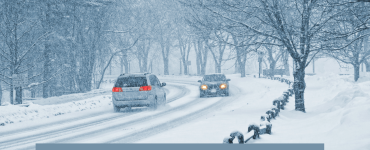Environmental Considerations in Oil Change Intervals and Types
Navigating Oil Changes with the Environment in Mind
In the realm of automotive care, motor oil environmental considerations have become increasingly pivotal. Particularly, understanding the role of oil change intervals and types in minimizing environmental impact is crucial. This article delves into how we can align our vehicle maintenance practices, specifically oil changes, with a commitment to environmental stewardship.

Key Takeaways:
- Optimal Oil Change Intervals: Adhering to manufacturer guidelines while considering driving habits for environmental efficiency.
- Impact of Oil Types: Exploring synthetic and conventional oils in the context of environmental impact.
- Driving Habits: How they influence oil change frequency and the choice of oil type.
- Vehicle Specifics: Tailoring oil change practices to different types of vehicles, including hybrids and high-mileage cars.
Oil Change Intervals: Striking a Balance
Understanding Manufacturer Guidelines
Vehicle manufacturers provide specific oil change intervals, often found in the owner’s manual. These guidelines are the starting point for environmentally conscious decisions. However, it’s essential to adapt these intervals based on individual driving habits and conditions.
- High-Mileage Vehicles: Older vehicles might require more frequent oil changes. Learn more about keeping your engine young.
- SUVs and Their Unique Needs: SUVs often have different oil change schedules. Discover the optimal intervals for SUVs.
| Vehicle Type | Suggested Interval | Factors to Consider | Relevant Link |
|---|---|---|---|
| General Passenger Cars | Every 5,000-7,500 miles | Manufacturer’s recommendation, driving conditions | Impact of Driving Habits |
| High-Mileage Vehicles | Every 3,000-5,000 miles | Age of vehicle, oil type used | Keeping Your Engine Young |
| SUVs | Every 5,000-10,000 miles | Vehicle size, engine type, usage pattern | Optimal Intervals for SUVs |
| Diesel Engines | Every 5,000-10,000 miles | Engine specifications, type of diesel oil used | Diesel Engine Oil Types |
| Racing Cars | Every 3,000-5,000 miles | High performance demands, type of oil | Racing Car Oil Requirements |
| Hybrid Vehicles | Every 5,000-10,000 miles | Hybrid engine specifics, driving conditions | Oil Change for Hybrid Vehicles |
| Vehicles in Cold Climates | Varies | Temperature effects on oil viscosity | Oil Types for Cold Climates |
Impact of Driving Habits
Your driving habits significantly affect how often you need to change your oil. For instance, frequent short trips or extensive idling can lead to more frequent changes. Conversely, steady, long-distance driving may allow for longer intervals. Understand the impact of driving habits on oil change intervals.
Choosing the Right Oil Type
Conventional vs. Synthetic
- Conventional Oil: Often cheaper but might require more frequent changes.
- Synthetic Oil: Longer-lasting and generally more environmentally friendly due to less frequent changes and better engine protection.
Specialized Oil Needs
- Cold Climates: Specific oil types are better suited for cold weather. Explore oil types for cold climates.
- Diesel Engines: These engines have unique oil requirements. Delve into diesel engine oil types.
- Racing Cars: High-performance vehicles demand specific oils. Find out about racing car oil requirements.
- Hybrid Vehicles: Hybrid cars often have different oil needs. Learn about oil change essentials for hybrid vehicles.
Environmental Benefits of Proper Oil Maintenance
- Reduced Waste: By extending oil change intervals responsibly, we reduce oil consumption and waste.
- Efficiency: Properly maintained engines run more efficiently, reducing emissions.
- Longevity: High-quality oils can prolong engine life, decreasing the environmental impact of manufacturing new vehicles.
Conclusion about motor oil environmental considerations
Balancing the need for regular vehicle maintenance with environmental considerations is key. By choosing appropriate oil change intervals and types, drivers can significantly reduce their environmental footprint. Remember, small changes in our daily routines can lead to significant environmental benefits over time.




